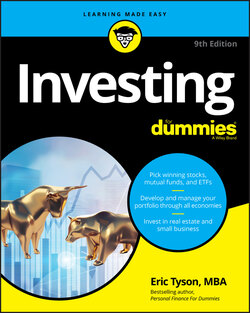Читать книгу Investing For Dummies - Eric Tyson - Страница 78
Treading Carefully When Investing for College
ОглавлениеMany well-intentioned parents want to save for their children’s future educational expenses. The mistake they often make, however, is putting money in accounts in their child’s name (in so-called custodial accounts) or saving outside of retirement accounts in general.
The more money you accumulate outside tax-sheltered retirement accounts, the greater the price colleges will charge you. Don’t make the additional error of assuming that financial aid is only for the poor. Many middle-income and even some modestly affluent families qualify for some aid, which can include grants and loans available, even if you’re not deemed financially needy.
Under the current financial needs analysis that most colleges use in awarding financial aid, the value of your retirement plan is not considered an asset. Money that you save outside of retirement accounts, including money in the child’s name, is counted as an asset and reduces eligibility for financial aid.
Also, be aware that your family’s assets, for purposes of financial aid determination, also generally include equity in real estate and businesses that you own. Although the federal financial aid analysis no longer counts equity in your primary residence as an asset, many private (independent) schools continue to ask parents for this information when they make their own financial aid determinations. Thus, paying down your home mortgage more quickly instead of funding retirement accounts can harm you financially for college. You may end up paying higher college prices and pay more in taxes.
Don’t forgo contributing to your own retirement savings plan(s) in order to save money in a non-retirement account for your children’s college expenses. When you do, you pay higher taxes both on your current income and on the interest and growth of this money. In addition to paying higher taxes, you’re expected to contribute more to your child’s educational expenses (because you’ll receive less financial aid).
If you plan to apply for financial aid, it’s a good idea to save non-retirement account money in your name rather than in your child’s name (as a custodial account). Colleges expect a greater percentage of money in your child’s name (20 percent) to be used for college costs than money in your name (5.6 percent). Remember, though, that from the standpoint of getting financial aid, you’re better off saving inside retirement accounts.
However, if you’re affluent enough that you expect to pay for your cherub’s full educational costs without applying for financial aid, you can save a bit on taxes if you invest through custodial accounts. Parents control a custodial account until the child reaches either the age of 18 or 21, depending upon the state in which you reside. For tax year 2020, prior to your child’s reaching age 18, the first $2,200 of interest and dividend income generally isn’t taxed. Over the $2,200 threshold, unearned income is taxed at the relatively high rates that apply to trusts and estates:
Up to $2,600 falls into the 10 percent bracket.
Between $2,600 and $9,450 is in the 24 percent bracket.
Between $9,450 and $12,950 is in the 35 percent bracket.
Above $12,950 is in the 37 percent bracket.
Upon reaching age 18 (or age 24 if your offspring are still full-time students), all income generated by investments in your child’s name is taxed at your child’s rate, which is presumably a lower tax rate than yours.
